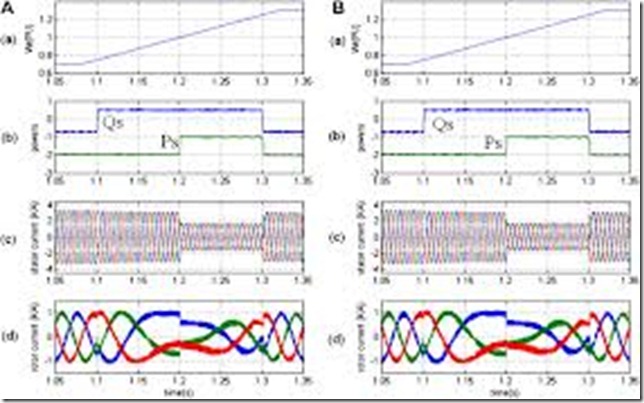Control of the Active and Reactive Power of a Synchronous Motor
The active power
Pm = P = 3VIac.t = ɷrotTload
of a synchronous motor connected to a large power system (V = const) can be varied by varying the load torque applied to its shaft (T1oad = VAr). As the load torque is increased, the power of a synchronous motor also increases, leading to a large angle θ and to a reduction in the margin of stability, π/2 – θ . If a synchronous motor is not to lose its margin of stability with increasing active power, one has to increase the field current at the same time. Large size synchronous motors are equipped with suitable apparatus which maintains the necessary margin of stability in response to a change in the active power of the motor.
The reactive power
Q = 3VI sin φ
of a synchronous motor connected to a large power system (V = coast) at constant active power P is adjusted by varying the field current If . When It is less than some limiting value, If,lim (P), the reactive power of the motor is inductive in its effect, QL = 3VIreac,L . When It is greater than some limiting value, If > If,lim , the reactive power of the motor is capacitive in its effect, QC = 3VIreac, C .
As a rule, synchronous motors are operated at an excitation level which results in a capacitive reactive power, so that the inductive reactive power of the induction motors connected to the same system is balanced out and the system is relieved of reactive current.
A case of practical importance is the use of a synchronous motor as a synchronous condenser which is an adjustable capacitive element (see Fig 18, P = 0). Synchronous condensers serve to improve the power factor of the system (see Sec. 2.20).

